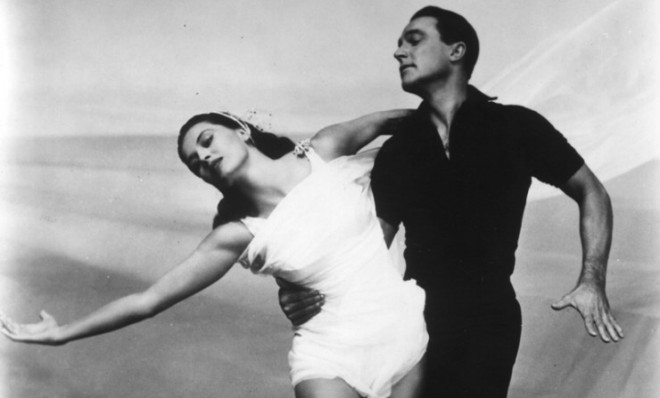7 discontinued Oscar categories
While Best Dance Direction was a fitting category in the 1930s, few films meet the criteria for such an award today


Oscar season is upon us, and just about every casual moviegoer and professional film critic has formed opinions on the various competitors in the race to the golden statuette. As always, the fiercest contention is for Best Picture, the self-explanatory award for the greatest overall achievement in the motion picture industry this year. Other awards of equal prestige but less popular interest include those for Best Documentary Short, Best Makeup and Hairstyling, and Best Sound Mixing — Oscars that rarely incite such impassioned debate over the most deserving winner.
The Academy of Motion Picture Arts and Sciences, the professional organizing body of the ceremony intended to honor the highest achievers in the field of filmmaking, recognizes that standards of achievement in the film industry evolve over time. The awards issued each year have reflected the ever-changing nature of the movie business — today's Best Visual Effects may well give way to tomorrow's Best Use of 3D Technology. Recognition is currently meted out to winners in 24 categories, but that number isn't set in stone, as categories have been added and discontinued over the years. In the lead-up to this year's 85th Academy Awards ceremony, we're exploring some past categories that didn't make the cut.
1. Academy Juvenile Award
The Week
Escape your echo chamber. Get the facts behind the news, plus analysis from multiple perspectives.

Sign up for The Week's Free Newsletters
From our morning news briefing to a weekly Good News Newsletter, get the best of The Week delivered directly to your inbox.
From our morning news briefing to a weekly Good News Newsletter, get the best of The Week delivered directly to your inbox.
In its heyday, the Academy Juvenile Award was given only sporadically to performers under 18 for particularly impressive dramatic feats. As a Special Honorary Academy Award, the Juvenile Award was under the exclusive jurisdiction of the Academy's Board of Governors, who would periodically issue an Honorary Award to recognize "outstanding contributions to screen entertainment" not otherwise validated by existing award categories — for example, by child actors whose talent was worthy of merit, but whom voters had trouble pitting against their more worldly adult counterparts amid the cutthroat competition of the Best Actor/Actress categories.
At the 4th Academy Awards in 1931, 9-year-old Jackie Cooper won the impressive honor of being the first child nominated to the Best Actor category, as well as the more unfortunate distinction of being the first child to lose the Best Actor category. In the absence of even a Best Supporting Actor category at the time, the Academy saw fit to provide special dispensation to the industry's wide-eyed youths. Three years later, Shirley Temple took home the first "Oscarette" at age 6, and to this day remains the youngest honoree ever to wield an Oscar of her own. Twelve performers received the same honor intermittently over the next 25 years, among them Judy Garland for her 1939 work in both The Wizard of Oz and Babes in Arms. Appropriately, the half-size statuettes which the winners held stood only seven inches tall.
During this time, the Academy established its Best Supporting Actor/Actress category, for which juveniles from 11-year-old Brandon deWilde to 17-year-old Sal Mineo were nominated and lost. When 16-year-old Patty Duke finally ousted her older competition to win the 1963 Best Supporting Actress award, the Academy dropped the Juvenile Award category and considered child actors on equal footing with adults. This year, 9-year-old Quvenzhané Wallis sets a record as the youngest nominee in the Best Actress category for her role in Beasts of the Southern Wild. To be nominated, however, is not to win, and no one under the age of 21 has yet won a Best Actor/Actress Oscar for a leading role.
2. Best Title Writing
A free daily email with the biggest news stories of the day – and the best features from TheWeek.com
Some discontinued Oscar categories are obvious relics of the past. The award for Best Title Writing in particular recalls the silent film era, which was just coming to an end as the first Academy Awards ceremony debuted in 1928. One of three contenders for the Best Title Writing title, founding Academy member Joseph Farnham won the category not on behalf of any particular film, but as an individual whose overall career his peers chose to recognize with the first and only award for title writing. As talkies rapidly rendered the intertitle screens explaining the film's action obsolete, so too did this category lose its relevance in the blink of an eye.
3. Best Dance Direction
Oh, those Gene Kelly days... Once upon a time, when black-and-white movies predominantly featured light-footed stars in tuxes and leading ladies in sequins and tap shoes, it made perfect sense to honor the choreographers in charge of coordinating all the twirling and whirling, as well as translating the live action artistry to a two-dimensional screen. The category remained a popular one for its short-lived stint from 1935 to 1937, with seven nominees vying for the title each year. However, resentment from the Directors Guild of America over the semantics of "direction," a term they felt should only be applied to the overall guidance provided by the film's Director with a capital D, effectively squashed the Academy's love for the choreographers among them.
4. Best Assistant Director
Unlike other, now defunct Academy Awards, the category of Best Assistant Director has a number of fans clamoring for its return. In the first year of its awarding, the Best Assistant Director Oscar went to no fewer than seven winners from seven different studios, acknowledging the diverse and necessary division of labor within a filmmaking team, much of which went to the assistant director uncredited. As the awards became more about competition and less about any sense of congeniality among film professionals, assistant directors continued to do the dirty work, but lost the opportunity to stand up onstage to be recognized for it.
The position of assistant director, in recent years, certainly hasn't been phased out; in fact, as the scale of movie production increases exponentially, the thankless work of an assistant director — preparing call sheets, maintaining orderly working conditions on set, and ensuring that filming progresses along its expected timeline — is often subdivided into first, second, and third assistant directors, if not more. Their roles embody the idea of "hard work, but somebody's got to do it"; however, the absence of discernable creative output means that it is difficult to judge their labor by anything but the movie that it helps to produce. Historically, assistant directors could aspire to become full directors with a shot at awards ceremony glory, as Alfred Hitchcock did, but more recently the path has tended to lead to producer roles. There's no Oscar for that, either, but at least they get a little more notice in the end credits.
5. Best Short Subject — Comedy/Novelty, One Reel/Two Reel/Color
The award that gave way to today's Best Animated Short Film and Best Live Action Short Film has seen a number of divisions and subdivisions over time, due both to changing technology and changing tastes in content. The distinction between the Comedy and Novelty categories might as well have been called "Comedy" and "Other" — there was no shortage of films featuring humorous subjects, which were naturally popular with 1930s audiences; all others were lumped into the Novelty category, for audiences for whom moving pictures themselves were still something of a novelty. Later categories distinguishing one-reel from two-reel shorts classified the films by their definition of "short" — one reel referred to, literally, a single 1000-foot length of film corresponding to about 11 minutes of screen time; a two-reel was twice that. Awarding an Oscar for Best Short Subject – Color went out of fashion, of course, when color became the default standard.
6. Best Engineering Effects
Awarded once and only once to Wings at the first-ever Academy Awards ceremony in 1929, the Engineering Effects category seems incredibly niche today. It was the predecessor, however, to a more general Best Special Effects award, which was subsequently renamed Best Special Visual Effects before the Academy settled on its most modern version as, simply, Best Visual Effects.
7. Best Original Musical or Comedy Score
This particular category still exists, but with fewer restrictions, in its current incarnation as Best Original Score, as the Academy likely recognized the significant contributions made by musical effects even in dramatic movies. The increasingly hazy definitions of musical and comedy may also have played a role in their decision, as contemporary films incorporate both musical and comedic elements without necessarily identifying within those prescribed genres.
There is, in fact, still an award for Best Original Musical still legitimately up for grabs, but it's been effectively defunct in the absence of sufficient eligible candidates every year since it was last awarded to Purple Rain in 1984. Until Michael Bay makes the Transformers sing and dance, it seems unlikely to make a comeback anytime soon.
More from Mental Floss...
* 6 nonexistent people who were nominated for Oscars
-
 ‘Kast’s victory is a political and ethical earthquake’
‘Kast’s victory is a political and ethical earthquake’Instant Opinion Opinion, comment and editorials of the day
-
 Turner Prize 2025: ‘artistic excellence’ or ‘cultural nonsense’?
Turner Prize 2025: ‘artistic excellence’ or ‘cultural nonsense’?Talking Point Work by the four artists nominated for this year’s award is on display at Bradford’s Cartwright Hall
-
 Man vs Baby: Rowan Atkinson stars in an accidental adoption comedy
Man vs Baby: Rowan Atkinson stars in an accidental adoption comedyTalking Point Sequel to Man vs Bee is ‘nauseatingly schmaltzy’